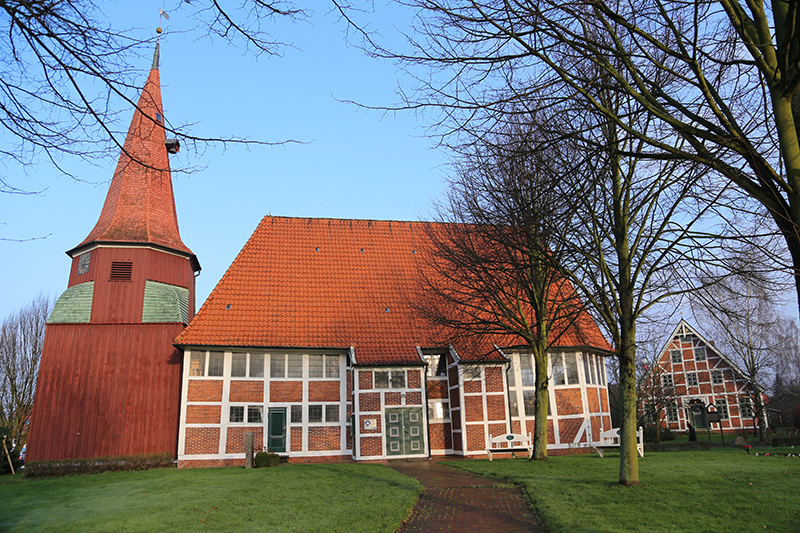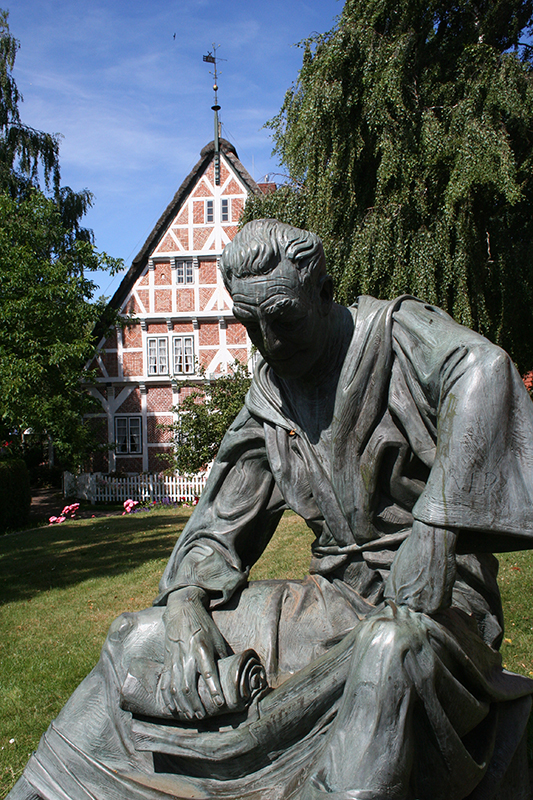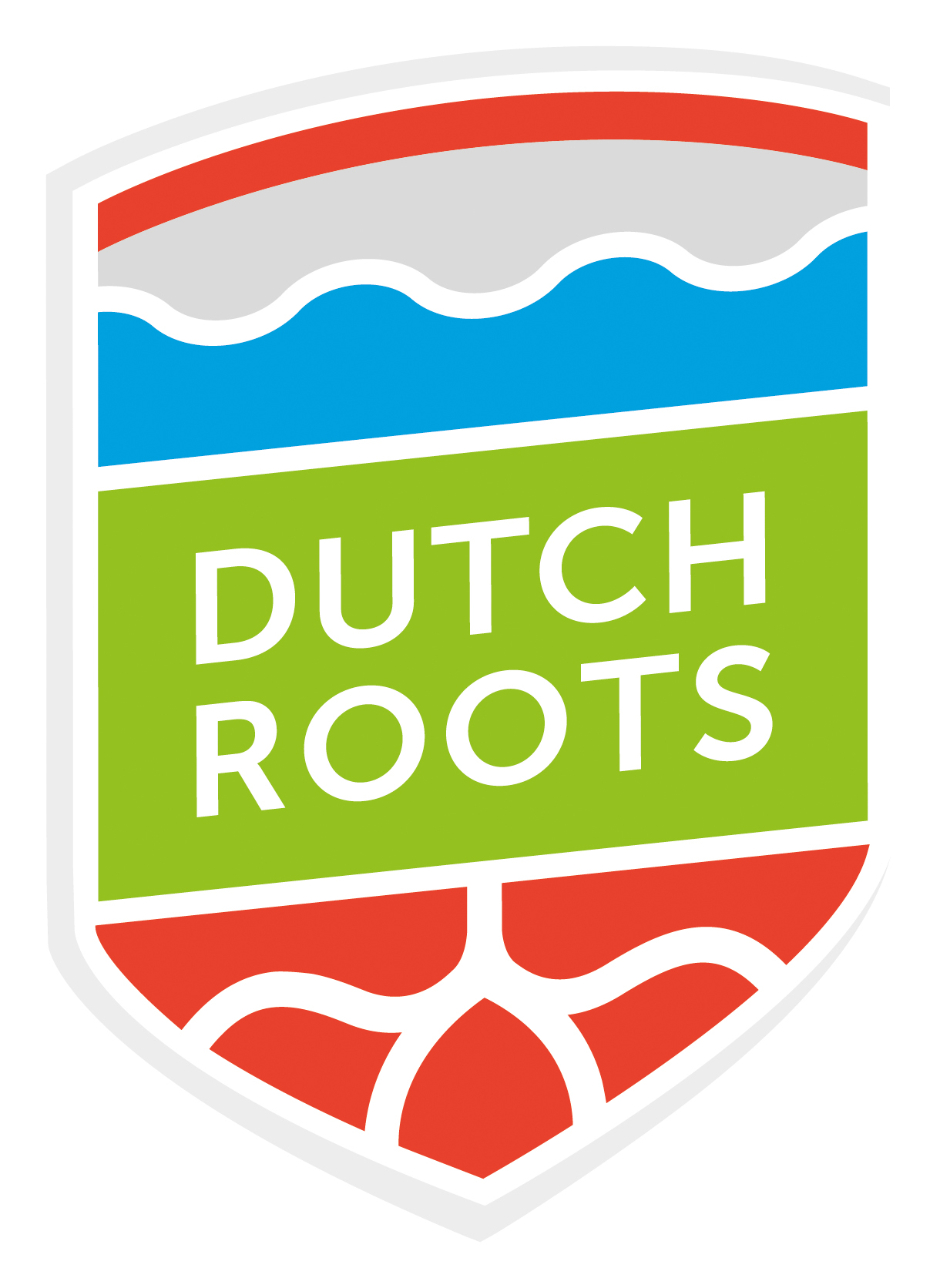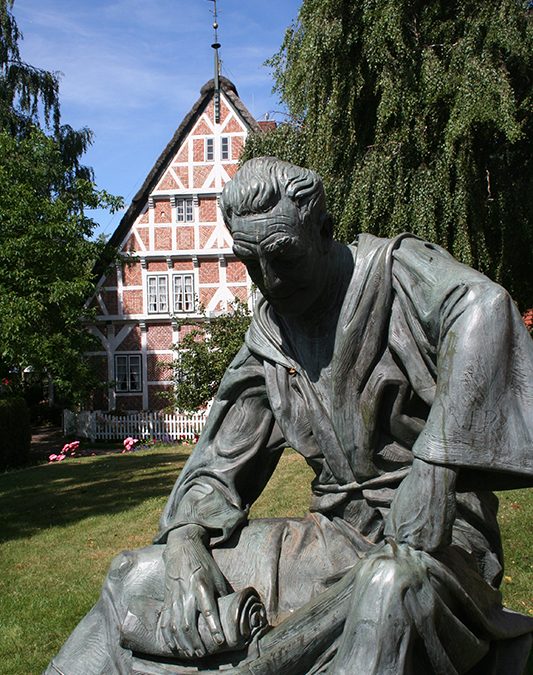At the west side of the river Elbe you find in Germany the largest area under fruit in central Europe. The name? The Old Country, das Altes Land. Dutch pioneers won the area in de Middle Ages on the freak water of the river.
Where the Elbe is leaving Hamburg – the way to the North Sea is still 110 kilometre – unfold a remarkable landscape. Look to the timber framed farmhouses, the surprizing churches and de endless orchards. The Altes Land is an area from levees and canals. With 14.000 hectare fruit, mostly apple (77 percent) and cherry (13 percent).
Near the church in Steinkirchen remembers a sculpture of priest Hendrik at the early efforts from the Dutchmen. Archbishop Friedrich I from Bremen gave in 1113 permission to start a colony. In 1140 the first mile of former wetland was dry and ready for the production of cereals. That success asked for more. After the first came the second and the third mile of polder land. The exceptional fertile Old Country was born.
Typical for the Altes Land are the villages with all farms at the main road. Behind the farm starts the agriculture land. Just like in many low parts of the Netherlands. In the Old Country are still living descendants of the Dutch pioneers, with family names like Winter, Peper and Tieleman.
Theo Leoné

Surprizing churches. (©Theo Leoné)

Monk Hendrik in Steinkirchen. (©Theo Leoné)

